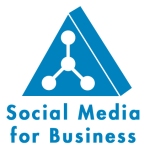

Anyone who uses the Internet can be subjected to Cyberstalking. The use of information technology, particularly the Internet, to harass another person has become common especially with the growth of social media and networking sites. People protect themselves on the street and they are always aware of strangers, but they hardly think about how easy it is for people to come into their homes through the Internet. Although, some people may think it is fun to post photos and information and status updates on sites such Facebook, Twitter, or MySpace they often forget about the hundreds or thousands of people who see or could potentially see that information.

Imagine it’s late on a Saturday night and you cannot fall asleep so you decide to sit down at your computer and check your Facebook messages. “Papa,” your new friend, wants to know if you can chat. You log onto the AIM facility on Facebook, and talk about everything from politics to which foods you like. You think you’ve made a new friend but you know nothing about “Papa,” but he knows a lot about you.
Cyberstalkers may use networking websites to contact their victims, or simply identify targets and plan the best way to stalk them. Cyberstalking can cross-over to physical stalking and in extreme cases be a prelude to more serious behaviour, including physical violence.
The stalking may begin online and then move into the physical realms where the cyberstalker will use the person’s information to follow them around. Social networking sites such as Facebook and Twitter encourage their users to keep updated information about their daily activities on the sites. In the mist of all this information sharing, social media and networking users tend to forget that one of their contacts or friend’s friend can stalk them. With the ability of creating a false identity and personality presented by the internet, one can never know who they are really communicating with on these networking sites. There are over a million social networking accounts on the web and it is really difficult to determine who is really genuinely socialising with you without any hidden agendas unless if you physically know the person.
There are various forms of cyberstalking and these involve the spreading of false accusations in order to damage reputations over the internet, encouraging harassment of other social networking users and false victimization. A good example of a non common mode of cyberstalking was when “Boxxy” a teenage girl with a webcam, a YouTube account and a tendency to spout hyperactive nonsense at an astonishing rate was victimised and harassed by other online users.
Boxxy created a YouTube video which managed to make its way to another social networking site where members of that site began anti Boxxy factions because of the content of the video. She began to get threatened and harassed over the web and she was ordered not to produce anymore online videos.
WiredSafety.org, a website dedicated to online safety, lists some characteristics that predators look for when searching for their next online victim and these include emotional instability and weakness. People who are new or unfamiliar with the internet or a specific social site are more likely to be victims of cyberstalking. According to the website about 83 percent of cyberstalking victims are women. So the question is, how then can one protect themselves from being cyberstalked?
Tips against cyberstalking
* Don’t exchange emails and photographs of yourself with people you’ve never met
* Don’t assume that the person you meet online is who they say they are, digital identities are malleable
* Never open unknown attachments from strangers, and use up-to-date anti-virus software
* And if you want to meet someone you know from online, take a friend along.
 Imagine phoning Telkom customer service and they put you on hold for 30 minutes, you eventually get impatient and you drop the phone and log onto to Twitter. You send a Twit about how long you have been placed on hold and how inefficient you think Telkom customer service is. Within a space of an hour, over 50 people respond to your Twit and also express the same sentiments about Telkom.
Imagine phoning Telkom customer service and they put you on hold for 30 minutes, you eventually get impatient and you drop the phone and log onto to Twitter. You send a Twit about how long you have been placed on hold and how inefficient you think Telkom customer service is. Within a space of an hour, over 50 people respond to your Twit and also express the same sentiments about Telkom. All this has been changed by the World Wide Web’s ability to enable customers to research products and services, and then through the explosion of social media tools such as Facebook and Twitter which can enable them to voice their opinions about products. Most businesses appreciate customer feedback, and social media has proved that it has the potential to transmit information at a fast rate thus making the feedback loop so much efficient because the company will get information in time to react upon it.
All this has been changed by the World Wide Web’s ability to enable customers to research products and services, and then through the explosion of social media tools such as Facebook and Twitter which can enable them to voice their opinions about products. Most businesses appreciate customer feedback, and social media has proved that it has the potential to transmit information at a fast rate thus making the feedback loop so much efficient because the company will get information in time to react upon it.

 Online social networking is one of the most efficient modes of communicating with distant friends, but this form of communication also comes with its own challenges. One of the biggest challenges that come with online social networking is the introduction of third parties to one’s conversation or exhibitions. Yes, social networking sites provide an opportunity for distant friends to link up and catch up on each other’s lives. But the big question is, who else is listening in on these stories, who else knows what colour you like or what type of car you have just bought.
Online social networking is one of the most efficient modes of communicating with distant friends, but this form of communication also comes with its own challenges. One of the biggest challenges that come with online social networking is the introduction of third parties to one’s conversation or exhibitions. Yes, social networking sites provide an opportunity for distant friends to link up and catch up on each other’s lives. But the big question is, who else is listening in on these stories, who else knows what colour you like or what type of car you have just bought. 
Recent Comments